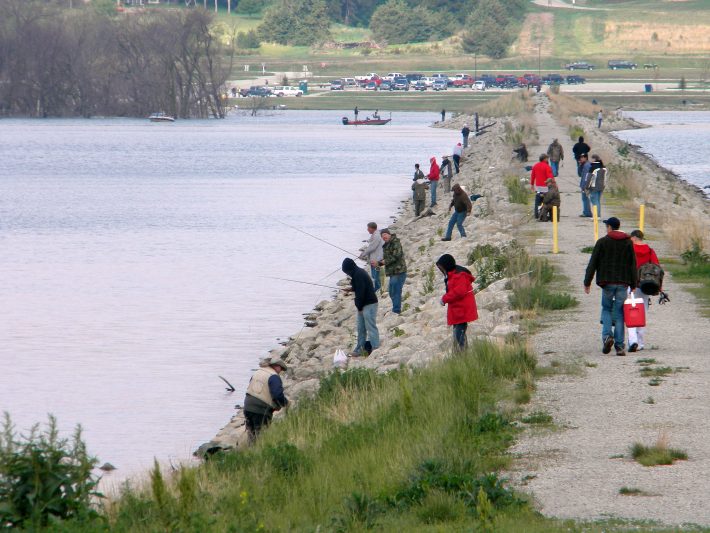Researchers: Fish and anglers should inform water management decisions
University of Nebraska-Lincoln press release
Management decisions for Nebraska lakes and reservoirs are often made at a local level with the assumption that anglers will just move to next nearest lake to meet their needs.
But researchers with the University of Nebraska-Lincoln point out in a new five-year study published in the Journal of Applied Ecology that anglers are as diverse as the fish within Nebraska’s largest lakes, and water management decisions made locally may have unintended consequences regionally and statewide.

“How we see a resource and use it is reflected on those resources and their diversity,” said Mark Kaemingk, lead author on the study and fishery scientist with the Nebraska Cooperative Fish and Wildlife Research Unit at School of Natural Resources. “Choosing a lake to use is like choosing a place to buy coffee. Why a person chooses Starbucks vs. McDonald’s is because of the difference in what you are after.”
So while some anglers are fishing from the bank of Pawnee Lake, others are fishing from a boat on Lake McConaughy. Those at Pawnee are likely to catch more fish, but fewer species; fish alone and for shorter periods of time. Those on Lake McConaughy will catch fewer fish, but a wider diversity of species; fish in groups of two or more; and stay for up to eight hours.
Both lakes are attracting anglers, but those anglers are looking for a different experience.
“The experience is in the eye of the beholder,” Kaemingk said. “In water management, we’ve tended to think locally and have not scaled up. But it turns out we can’t apply a blanket approach to angler and fish management.”
A more realistic approach is to manage by water type and by angler type at a regional scale reducing fish population stress and the taxing on the lake and surrounding resources, he said. What is true and works for Pawnee Lake’s water management won’t apply to its nearest neighbor, Branched Oak Lake.
“If you can’t launch your boat at one lake, you may go to another,” Kaemingk said. “But you also may not fish at all, or you may drive further to find a comparable experience.” Whatever decision the angler makes will have an effect on local, regional and statewide resources. More anglers on a smaller body of water will increase fishing pressure; more boats on a lake could also increase gasoline pollutants in water.
“We need to be aware and mange for those effects,” Kaemingk said. “It’s a delicate balance to manage for human needs and the demand on the resource.”
While the researchers now have statistical evidence to back this up, they also unearthed a slew of questions they want to pursue in future research. Included are what role the size of the lake makes in the decision by users to interact with the resource, but also what happens if the largest body of water in a state is nearest to the largest population center. They also are collecting data on whether management decisions have impacts on lakes in states that border Nebraska.
“We are excited to learn more about angler behavior at multiple spatial and temporal scales,” Kaemingk said. “Anglers are a critical component of a fishery and we still have a lot to learn about them.”
The Nebraska Cooperative Fish and Wildlife Research Unit is a collaborative relationship between the federal government, the University of Nebraska, the state and non-profit organizations. The Nebraska unit was formed in 2004 at the University of Nebraska-Lincoln.
Read the full article (freely available for a limited time):
Kaemingk MA, Chizinski CJ, Hurley KL, Pope KL. Synchrony — An emergent property of recreational fisheries. J Appl Ecol. 2018;00:1–11. DOI: 10.1111/1365-2664.13164
Media contact:
Mark Kaemingk, Fishery Scientist, Email: mkaemingk2@unl.edu
Like what we stand for?
Support our mission and help develop the next generation of ecologists by donating to the British Ecological Society.